With the FDA establishing a new category of over-the-counter hearing aid devices in 2022, we have seen the marketplace filled with inexpensive hearing aids. Most of these hearing aids can be purchased through the internet and have modest price points of between $300 to $1,500 for a pair. I ordered a couple of different types online and had to return them. I finally bought a pair of very expensive ReSound Nexia hearing aids and am relatively happy with the results.
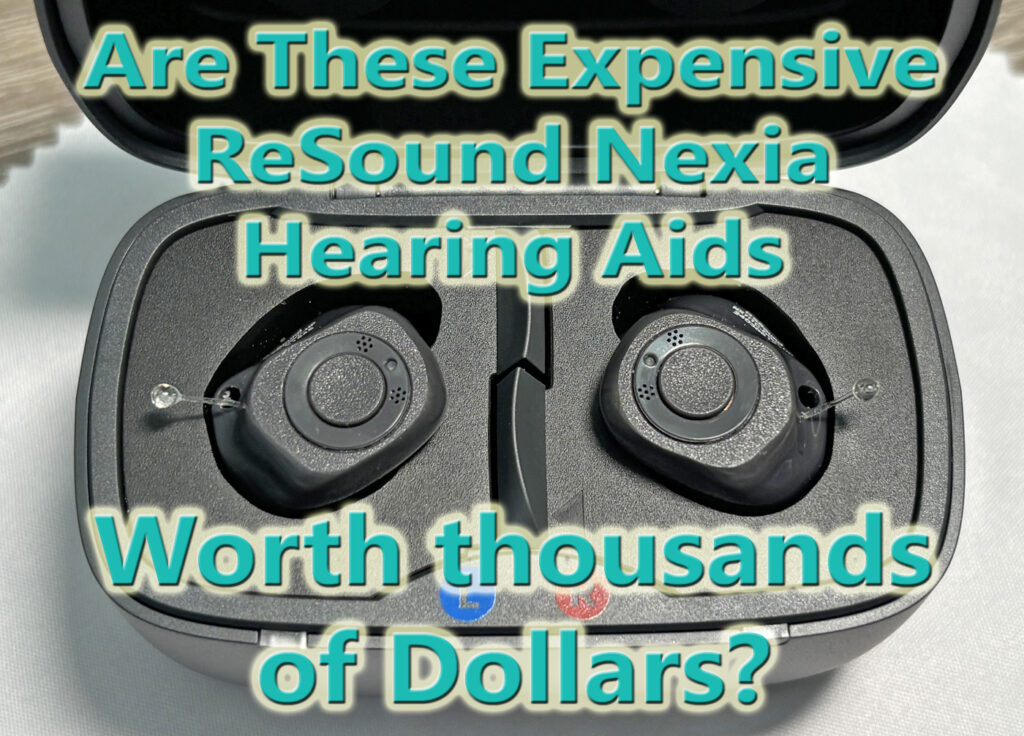
I have mild to moderate hearing loss coupled with tinnitus. Even though I see few of my clients in person, I was having difficulty hearing half of the conversations I did have. The hearing difficulty extends to family conversations, watching TV, dining out, and interacting with staff at grocery stores. It was time to invest in a good set of hearing aids so I wasn’t always saying, “Pardon, could you repeat that?”
Will Expensive ReSound Custom Hearing Aids Meet the Test?
However, my daily life has me switching from talking to people in person, long telephone conversations, and listening to music. Most of the time I have been using wireless earphones that have been great for telephone conversations and listening to my 80s new wave-ska-punk inspired music channel. I also have a pair of hearing aids that drape around my neck. They are great for watching TV and close conversations. They are not great for some activities and get tangled up with the collared shirt.
My dream hearing aid solution is one that allowed me to seamlessly switch between phone, streaming music, talking in person, and leaning over to pick up the cat without the hearing devices falling out or getting tangled up. I researched many of the over-the-counter (OTC) options online that I thought would fit my requirements. All the options were within my budget.

My first purchase was a pair of Eargo Link in-ear hearing aids. I immediately had problems with keeping the right hearing aid in my ear. With the Link, if you touch or tap the hearing aid you answer or hang up a phone call. As the hearing aid was slipping out of my ear, you guessed it, I touched the hearing aid and disconnected my phone conversation with a client.
All the OTC hearing aids come with a variety of ear bud sizes and shapes to accommodate a range of ear canals. Regardless of the tips I used, I could not get the Link hearing aids to stay in my ears. The Link hearing aids worked as advertised and had good sound quality. The Eargo customer service was outstanding.
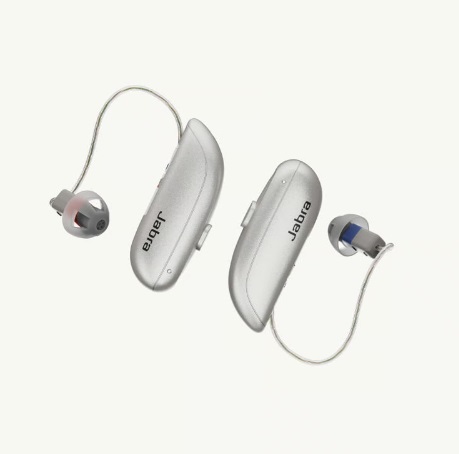
My next purchase was an over-the-ear hearing aid by Jabra. While the over-the-ear aids did not fall out, I had a devil of a time getting the ear bud to stay in the ear canal. I even ordered a longer lead. I tried a variety of different buds from very small to large. However, just walking around made the ear bud slip out and the sound amplification was greatly diminished.
When the Jabra over-the-ear hearing was in place, the sound was good. Not as good as the Eargo Link. This was noticeable with streaming music. Regardless, the Jabras were not going to work and I had to return them. Like Eargo, the customer service was excellent. Both the Eargo and Jabra were Bluetooth enabled hearing aids and pairing them to my iPhone was simple.
Ear Canal Impression Was a Game Changer for Me
Finally, I made an appointment with hearing aid center to investigate if hearing aids offered by them were any different. First, there was the hearing test that confirmed my hearing loss, exacerbated by tinnitus. Next, the audiologist suggested an in-ear hearing aid that met my requirements of conversation, phone, and music delivery.
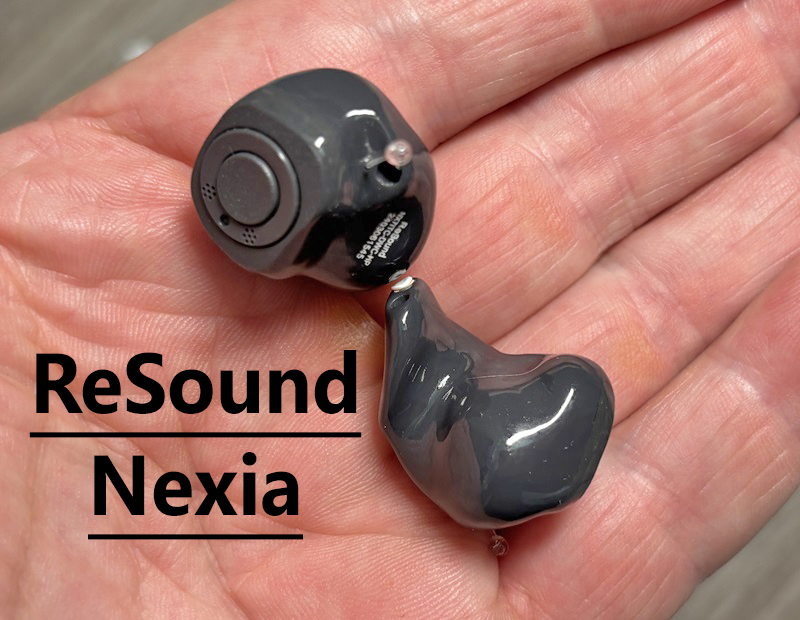
The next step was a game changer for me. The audiologist took an impression of my inner ears, while noting that the ear canal took a sharper turn than the average ear. If nothing else, confirmation of having an ear canal that did not match the average ear explained why I had so many problems with the other hearing aids. The ear canal impressions are used to create the shells for the hearing aids, so they fit comfortably in the ear canal.
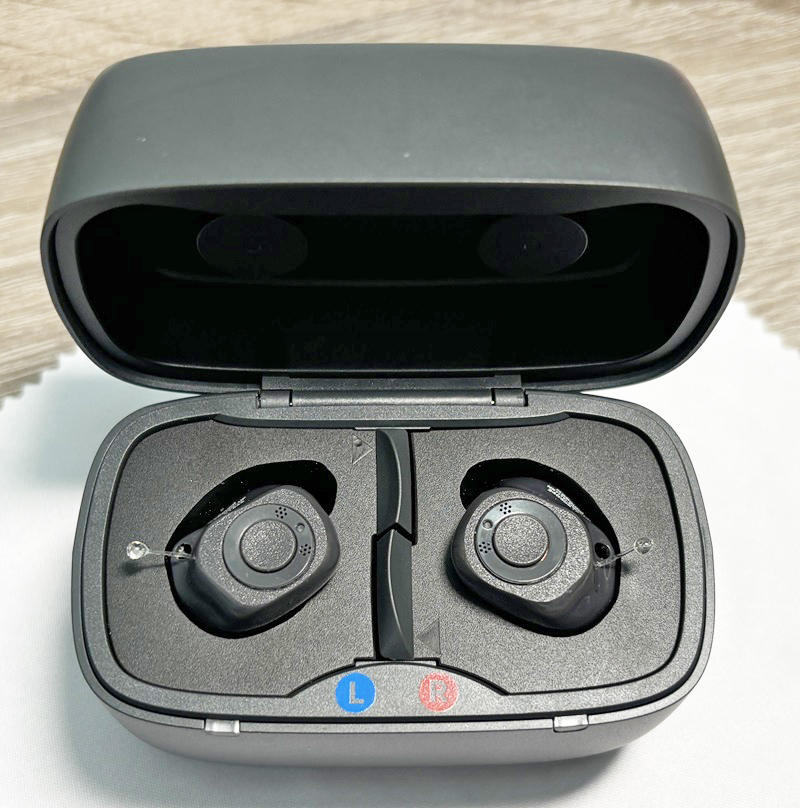
Two weeks later, the hearing aids arrived, and I returned to the hearing aid center for the fitting and test. They fit with no issues. The hearing aids are the rechargeable ReSound Nexia. I sat with the audiologist as he adjusted the output profile of the hearing aids to maximize the utility of the hearing aids for my particular hearing loss over his computer wirelessly connected to the hearing aids. We then paired them to my iPhone. I had already downloaded the hearing aid app on my phone so I instantly saw the set up.
The good fit and sound helped subdue some of my purchasing anxiety. But are they worth the extra money versus the OTC brands.
Reviewing the ReSound Nexia Hearing Aids
Now, for the real review of the Resound Nexia hearing aids that cost me more than several thousand dollars.
Part of the cost of hearing aids from a local hearing aid center is the hearing test, evaluation, selection, and ear canal impression. I must give a lot of weight to the value of the ear impression because it is likely that I would never be able to purchase functioning hearing aids without the custom shell. But are the hearing aids better than what you can purchase through the internet?
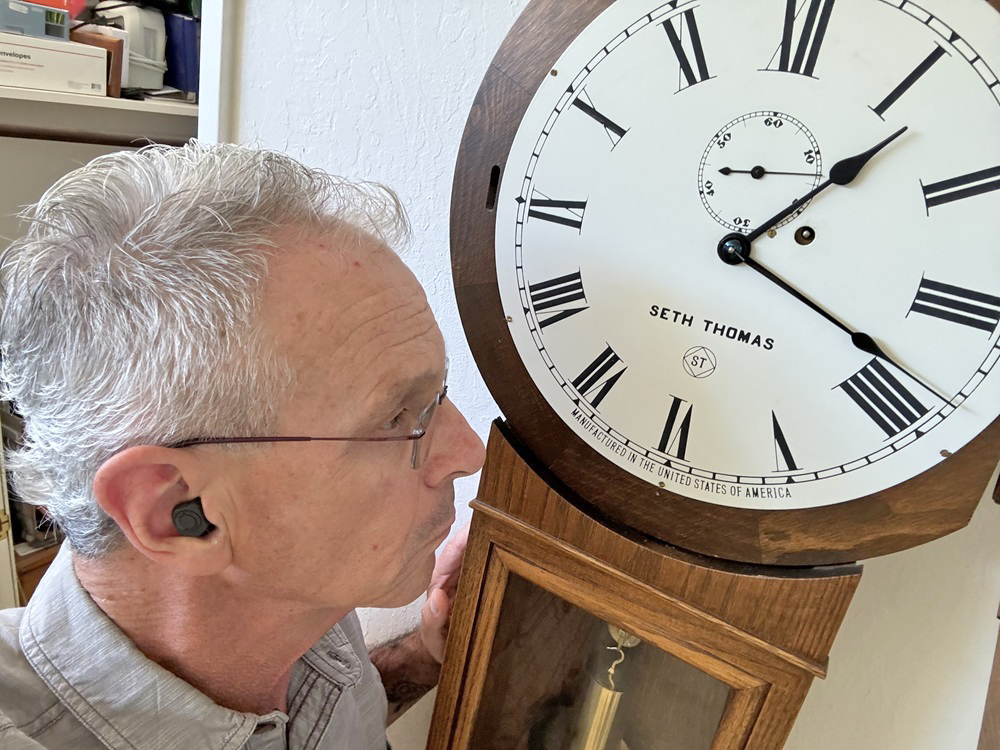
It does seem that higher cost hearing aids do have more functionality and the ability to make minor adjustments. The functionality and adjustments come with the cost of technology that can be challenging for some people. In other words, the ReSound Nexia hearing aids can be as technically complicated as the mobile phone they are paired with. Side note, ReSound is a unit of Jabra, the manufacturer of a previous set of hearing aids I had purchased.
Battery Life
The Nexia claims 28 hours of use before needing to be recharged. After a 12-hour day of phone calls and streaming music, my hearing aids showed 50 percent battery life left. That is acceptable.
Comfort
I have not experienced any discomfort with the hearing aids in place all day long. They have not fallen out of my ears. I don’t worry about leaning over or other athletic moves that would cause other ear buds to dislodge from my ears.
Multi-Tasking
It has been easy to switch from in person conversations, to a phone call, or stream music, as I listen to while writing this post. I fully expected some issues, but thus far, no connectivity issues switching between listening modes.
Sound Quality
Overall, the sound quality has been good. I can still have issues accurately hearing people in some situations. This is resolved by switching the output profile mode or making a minor adjustment to Streaming Focus or Hear All.
Music
I have created my own sound profile for music where I increase the treble and midrange frequencies. The music quality is not as good as dedicated music ear buds, but pretty darn close for me. The significant difference is that the Nexia are not only delivering the music, but also the ambient sounds. With the Streaming Focus you can dim the surrounding ambient sound input for a higher quality music experience. Although, there is this weird Karaoke experience where you can hear the music and hear yourself singing – offkey – while walking down the hall.
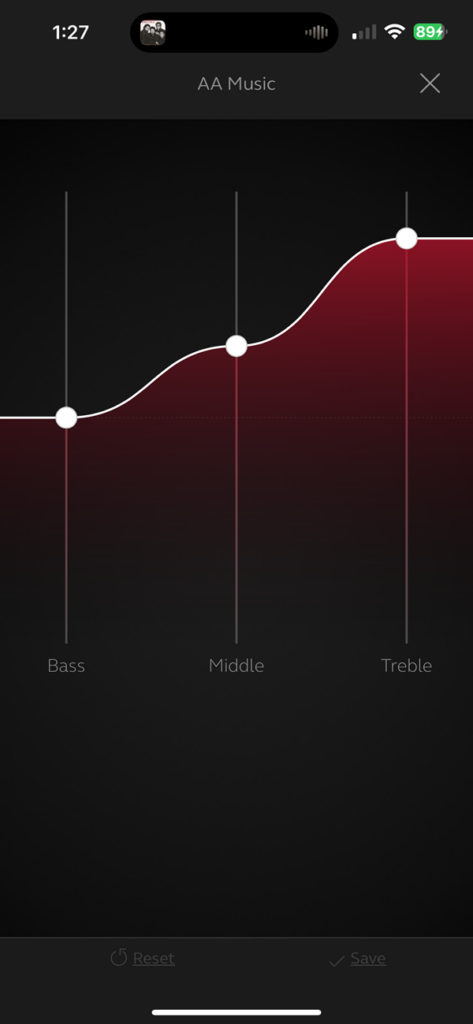
Telephone
One of my concerns was if the microphones would adequately deliver my voice to the person I was talking to through the phone connection. The only time I have had a problem was when I was outside and the outdoor noise made it difficult for the person to understand me. I moved to a quiet area and there was no problem. No microphone issues when I’m in my office.
Noise
One output profile is Hear in Noise. When I use that program and additionally select the Noise Filter, the hearing aids trim down the surrounding sounds of the grocery store and focus on sound in front of the hearing aids. It’s a little odd, like you are eavesdropping on someone if they are talking to someone else. The hearing aids focus on the sound directly in front of you.
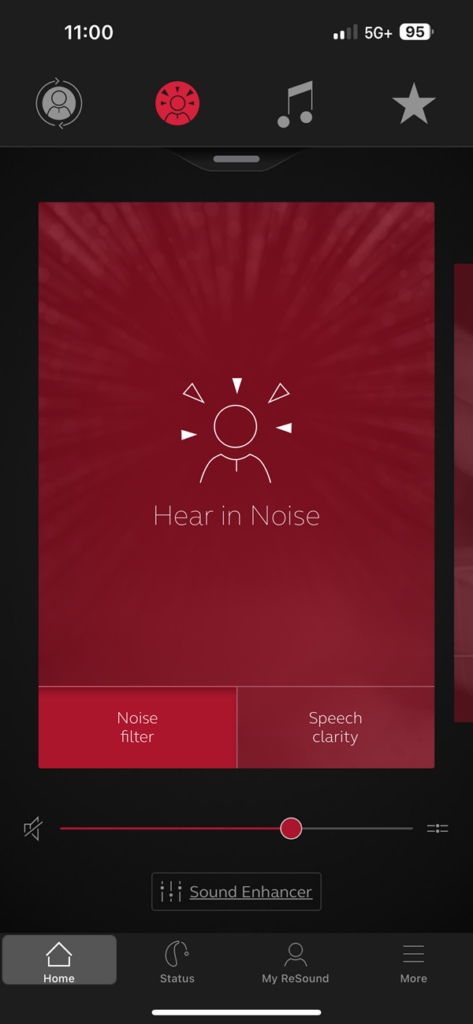
Microphone Logic
From my understanding, each hearing aid has two microphones, and they can change from a directional input or omnidirectional function. For better or worse, the logic of the hearing aids will attempt to focus on the most prominent sound in the environment. This is accomplished by changing the directional aspect of the microphone or dimming the input of certain microphones.
For example, if I am driving and roll the window down, the wind noise is amplified and the car speakers are dimmed. When walking with my spouse having a conversation and a car drives by, the logic switches to amplify the car and turns her voice down. I’ve already been accused of not listening to my spouse, I don’t need the expensive hearing aids to be complicit in those alleged selective hearing situations. Regardless, you can notice how the hearing aids are flipping microphones off and on to focus on the most prominent sounds.
On a follow-up visit with the audiologist, he created another output profile that prevents the microphone logic from dimming the surrounding sounds. It seems to work well. I suppose that is one of the benefits of working with a hearing aid center is the additional support to tune the hearing aids to your life.
Minor Modification
Depending on what I’m doing, streaming music or walking through a store, the minor adjustments to the output profile will change from Noise Filter or Speech Clarity to Streaming Focus or Hear All. All the minor adjustments and on-the-go modifications are nice, but technical for people who don’t use their mobile phone as much as I do.
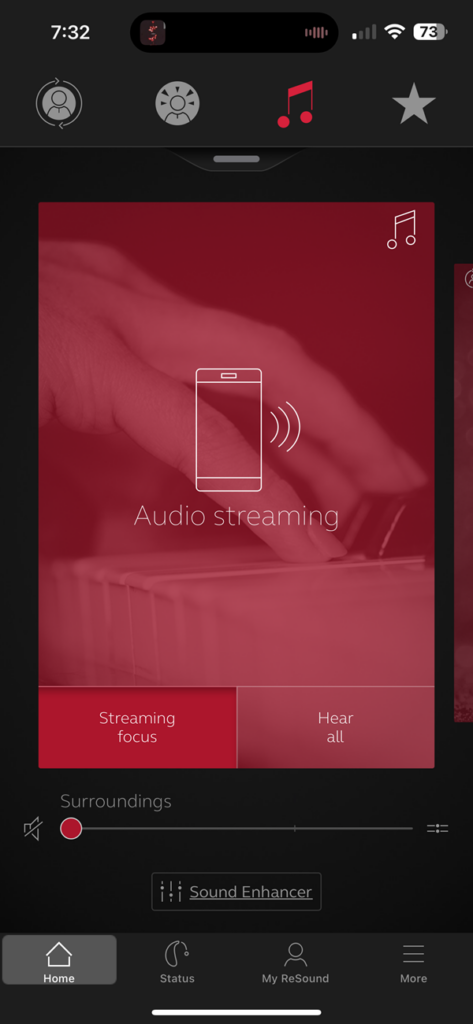
Wind Noise
There is no way around it, wind noise is a problem. If you are outside and there is any gentle breeze, you will hear a scratchy input. Fortunately, during the winter months, I wear a headband to keep my ears warm so the wind noise should not be an issue.
External Inputs
While the Nexia hearing aids have been great at switching between conversations, telephone, and music, I must remove them to work on editing videos. It is just easier to use dedicated ear buds when editing a video to get the most accurate sound.
Alerts and Notifications
One of the downsides of the other wireless earbuds is that they all interacted with the iPhone differently. Some would direct alerts and notifications into the speakers, others would not. If a call came in, I may not hear it if I was listening to music. With the Nexia, if the alert is not delivered to the speakers, I hear the ring tone, even if I am listening to music or having a phone conversation.
Bluetooth and MFi
The Nexia hearing aids communicate with my Apple iPhone with a Bluetooth type connection. However, the hearing aids don’t show up under the My Devices under Bluetooth in the Settings section. With the Apple phones, I can’t speak to Android phones, the Nexia was designed for the Made for iPhone integration or MFi. There is a separate section under Settings>Accessibility>Hearing Devices.
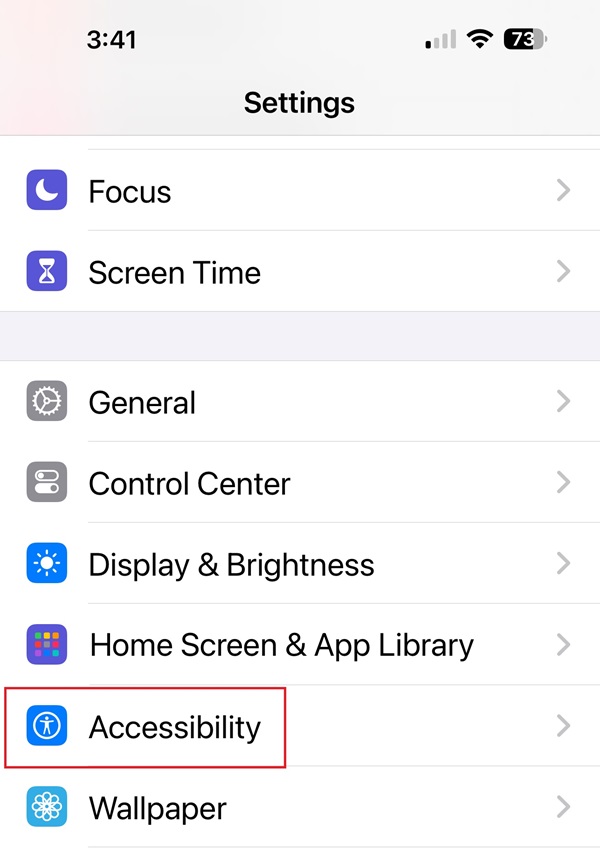
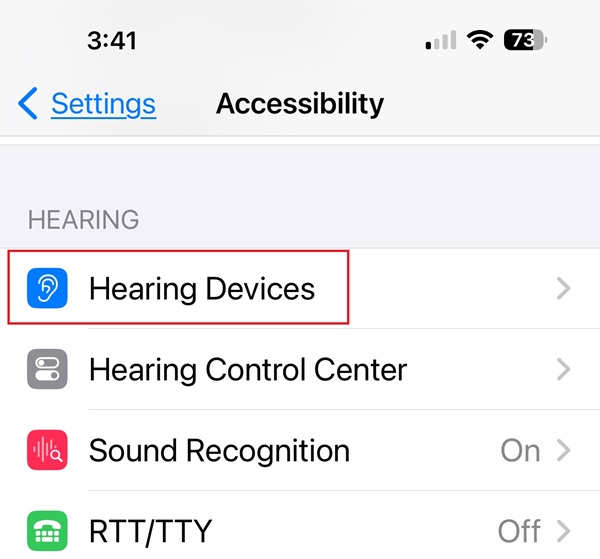
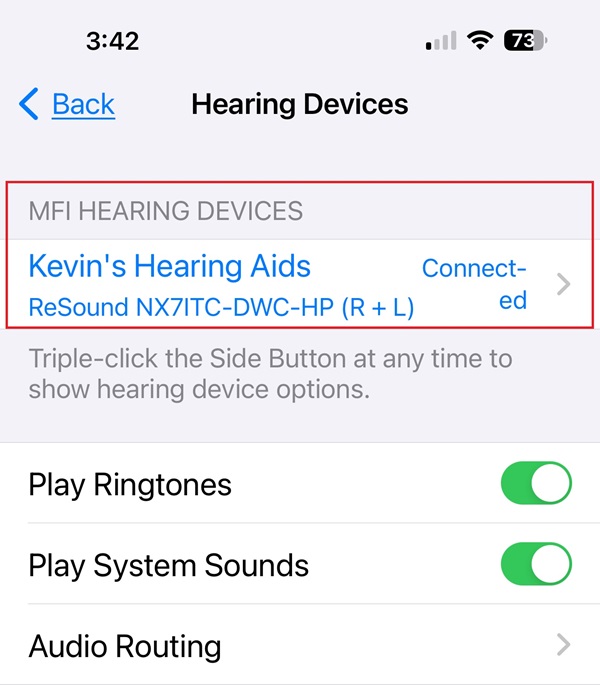

While the iPhone Hearing Devices recognizes all the functions and programs of the hearing aids, I found it easier to use the ReSound app on my phone. The preset output programs are All Around, Hear in Noise, Music, and then I created my own program that increased the treble and midrange sound frequencies for my music. With the app it is easy to micromanage the preset for subtle changes such as Noise Filter. The range of connectivity of the hearing aids from my phone is approximately 20 to 30 feet.
Car Bluetooth
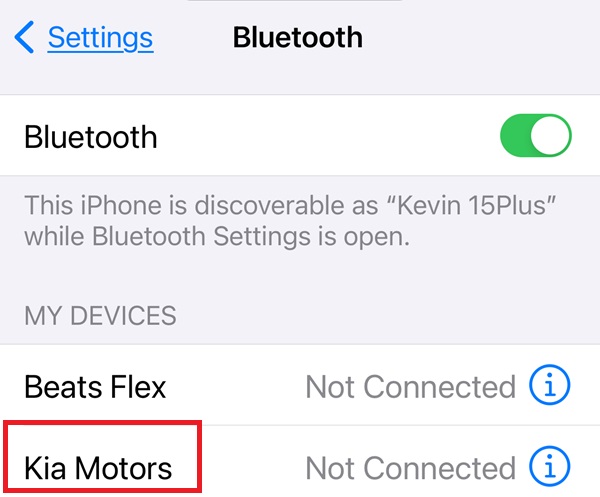
So far, everything works good with my car. If music is playing through the stereo system and a call comes in, the default is the iPhone sending the call audio through the cars speakers. The phone gives me the ability to switch from car speakers to hearing aids, or speaker phone. While it works today, I’m sure there will be a blip where connectivity is lost while I’m in the car and I lose the phone call. It is part of the technical and complicated world of wireless communications we must live with.
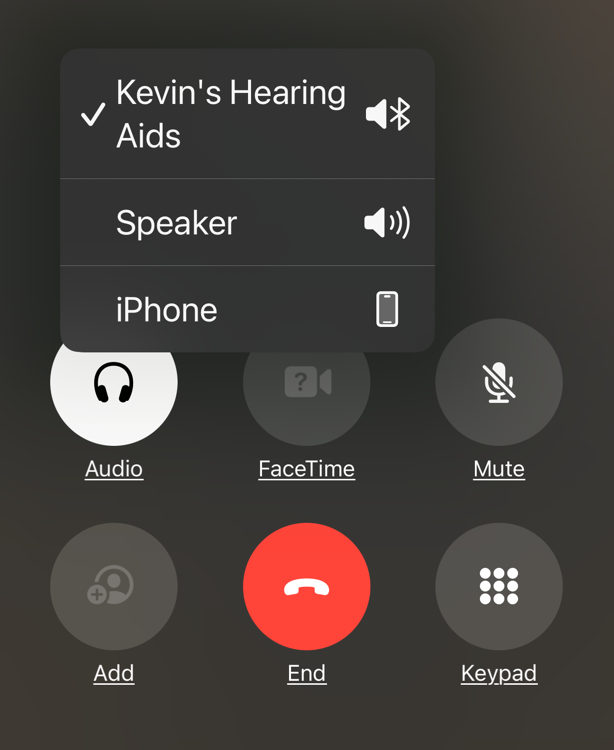
Conclusion
From my experience, the ReSound Nexia, and probably most of the in-ear hearing aids you can purchase from a hearing aid center, are better than the OTC brands on the market. They have more functionality that can be useful for people who demand a lot from hearing aids, like me. Are the Nexia worth ten times more than the OTC brands? The hearing aids, while superior to the OTC brands, by themselves are not worth the extra money. We must remember that you are not just buying the hearing aids, you are paying for the hearing test, custom fitting, and follow up support.
Because I value my time, I’m willing to pay the extra money. I wasted lots of time researching the online hearing aids, receiving them, testing them, and then returning them. If you are not technologically savvy, you will certainly benefit from the support and guidance of a professional audiologist and hearing aid center.
Some OTC Hearing Aids are a Great Value
Should you take the plunge and commit to spending thousands of dollars for these ReSound Nexia hearing aids or any other compatible quality hearing aids? You first need to assess if a multi-functioning hearing aid is necessary and if one the OTC offerings might meet your criteria. One of the OTC brands may work perfectly well for you. I want to emphasize I had great customer experience with both Jabra and Eargo.
In 10 years, when I’m not working and don’t need to easily switch from conversation, to phone, or music, I may not need all the bells and whistles. On the other hand, my ear canals will not change. I will most likely always need some sort of custom fit hearing aid. In short, I guess I’ll always be on the hook for thousands of dollars anytime I need to replace my existing hearing aids.
My YouTube Video of my hearing aid review.


